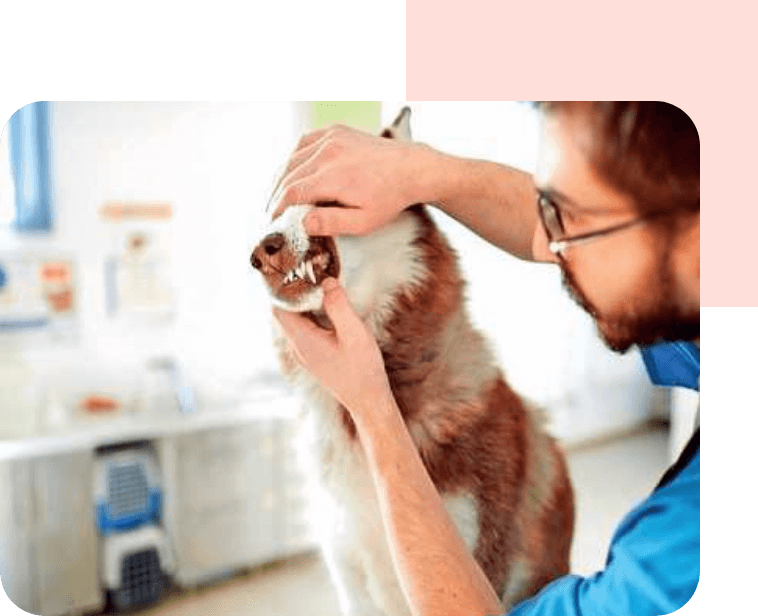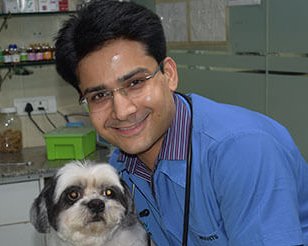Veterinarian dentists prevent, diagnose and treat conditions, diseases, and disorders of the oral cavity, maxillofacial region, and its associated structures in animals. Unlike other veterinarian fields where the pet comes to the vet after it has gotten affected by the disease, in dentistry, diseased or not, the pet must come regularly for oral examination to be taken care of properly.
The main signs of oral disease include:
- Broken and discolored teeth
- Changes in eating behavior
- Change in temperament
- Morbidity
- Weight loss
- Inability and unwillingness to open or close the mouth
- Rubbing or pawing at the face
- Ptyalism (excessive flow of saliva)
- Halitosis (offensive breath)
- Nasal discharge
- External facial swellings
Pain due to dental problems often goes unrecognized by owners and professionals. Thus, treatment must also include pain management along with disease meds and other procedures.

- The physical exam should be done annually without fail.
- It includes an oral exam to recognise problems with teeth, periodontal disease and other oral diseases.
- The comprehensive oral exam begins by observing the face, recognising that there are normal breed variations but carefully observing for abnormalities.
- Is the bite right?
- Is there a malocclusion
- Is there facial swelling or discharge?
- Are there excessive depositions of calculus (tartar) on one side of the mouth compared to the other?
- Is the pet unable to chew on one side due to an abnormal occlusion or a TMJ problem?
- Is the pet avoiding chewing on one side?
- Fractured or sensitive teeth may lead to serious dental infection, tooth abscess, facial swelling, or draining tracks.
- The soft tissue is also observed for problems of gums, insides of cheeks, hard and soft palate.
- Unusual odor indicates the need for further evaluation.
A more detailed and thorough oral exam is provided under anesthesia.
The sooner we know about a dental or oral problem, the better. Most of the conditions which affect the mouth are painful and will therefore need swift investigation and treatment.
Gingivitis/periodontal disease: It occurs when the body’s immune system reacts to bacteria and toxins that accumulate on teeth in the form of plaque.
- It is progressive and results in tooth loss, oral pain, infection, bad breath, and potentially systemic complications.
Fractured teeth: The most common causes of fractured teeth are: cow hooves, antlers, hard nylon toys, ice cubes, rocks, marrow bones, etc.
- It allows bacteria to enter the tooth.
- Treatment of this type of fractured tooth is done by root canal therapy or extraction.
- Sometimes, placing a crown is also recommended.
Discolored teeth: It can occur when a pet chews on hard objects or from blunt trauma to the mouth.
- The pulp of the tooth bleeds and initially stains the dentin pink.
- Eventually, the tooth becomes purple or grey.
- Currently, the discolored teeth is either extracted or treated with root canal therapy.
Persistent primary teeth: Sometimes, a pet’s adult tooth can erupt before the baby tooth has fallen out.
- This can prevent the adult tooth from erupting in its appropriate place.
- It can also cause crowding between teeth and contribute to plaque accumulation and subsequent gum disease.
- The persistent primary tooth is generally extracted to prevent malocclusion or a misaligned bite.
Stomatitis: It is a severe inflammation of the oral cavity caused by an exaggerated inflammatory response to the plaque bacteria.
- The inflammation causes the gum tissue and oral cavity to become swollen, red, and very painful.
Feline tooth resorption: It results in loss of tooth structure and is painful.
- Often multiple teeth are affected and multiple lesions are also very common consequence.
- Dental radiographs are imperative to diagnose and treat tooth resorption.
Carious lesions (cavities): These are typically seen on the flat occlusal surface of the molar teeth in dogs and have a brown or black coloration.
- If the cavity has not affected the pulp canal, then either root canal therapy or extraction is recommended.
Oral masses: These may be benign or malignant and early detection of these is of utmost importance for surgery.
- Jaw fractures: Diagnosed via CT scan, these are realigned by various techniques.
Canine tooth resorption: Diagnosed by dental radiographs, these occur as lesions and are very painful. Hence, tooth extraction is recommended.
- Jaw fractures: Diagnosed via CT scan, these are realigned by various techniques.
Malocclusion (abnormal bite): These are mainly genetic and are treated via moving the teeth with orthodontics, extracting teeth, or crown shortening with vital pulp therapy.
Meet our team members











